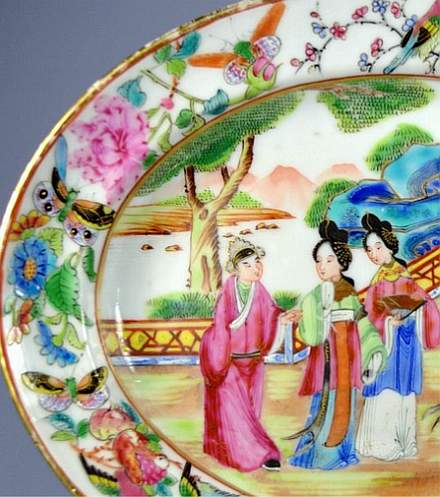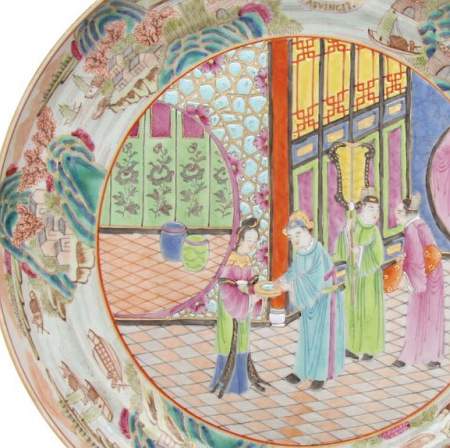Qianlong seal with extra marks beneath it
by Christine
(Milwaukee, WI)

Front
Hi, my name is Christine, and thanks for taking a look at my post. I have a few questions about a chinese plate with two geishas looking at a censor.
I think it is beautiful, but have a few questions about the marks on the back. I have found a picture online of the Qianlong seal that matches this one identically, the parts inside the squares, but I have never seen any markings below the seal.
Does anyone know what these might mean?
Also, I am confused about part of the seal. It is in the middle row on the top, and in most pieces I have seen there is an "S" shape.
This piece doesn't have that, and I am wondering why? Am I correct in assuming this is a reproduction, or period piece?
I found it at an estate sale. I am an avid rummager, and didn't pay too much for it, but I am just wondering what it is exactly. I like to hunt for the best bargains, and so far have done pretty well.
Thanks to all for the help in identifying these marks!!
Christine
Comments for Qianlong seal with extra marks beneath it
|
||
|
||
|
||
|
||











